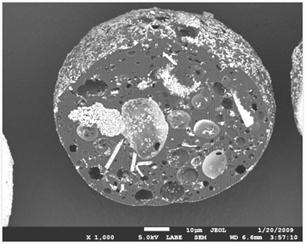+PRECISE +SMALL +EFFICIENT
Structure-property relationships are key to understanding physico-chemical phenomena. On a nanometric scale, one of the challenges relates to the accuracy of the analyses required to determine the exact structure. Prof. Martel’s team, in collaboration of Prof. L’Espérance’s, addressed this problem in the development of a localized therapeutic vector for the treatment of cancer.
The anti-cancer strategy adopted called for combining an anti-cancer agent with ferromagnetic nanoparticles in biodegradable microparticles to target one of the lobes of the liver. The localization involves the use of magnetic resonance imaging (MRI): the movement of microparticles in the blood vessels is therefore controlled by the application of an external magnetic field. The advantage of localization lies in the treatment’s increased effectiveness and reduced side effects.
State-of-the-art equipment and the expertise of Prof. L’Espérance’s team have led to the characterization of sterological and crystallographic parameters of nanoparticles as well as their spatial distribution in microparticles. This data was used to improve the synthesis of nanoparticles and guide the vector in the blood vessels — a major breakthrough in this field.
REFERENCES
[1] P. Pouponneau, J.-C. Leroux, G. Soulez, L. Gaboury, S. Martel, Biomaterials, 32, 3481-3486 (2011).
[2] P. Pouponneau, J.-C. Leroux, S. Martel, Biomaterials, 30, 6327-6332 (2009).
RESEARCHERS
Prof. G. L’Espérance and J.-P. Masse (École Polytechnique), Prof. S. Martel and P. Pouponneau (École Polytechnique)
